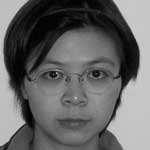Nanotechnology & materials
Yu Huang
Fashions three-dimensional grids of nanowires that act as electronic circuits

Global
Stephen Turner
Built a tiny device that greatly speeds up DNA sequencing

Global
Zhenan Bao
Fabricates organic semiconductors used in flexible and cheap electronic devices

Global
Cary Gunn
Shrinks optical circuitry to speed transmissions on phone and Internet networks

Global
Daniel Bond
Turns sea muck into fuel cell power plants
